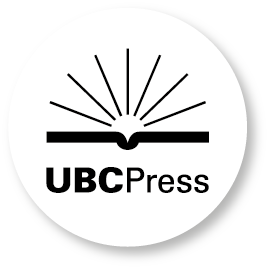
To Render Invisible
Jim Crow and Public Life in New South Jacksonville
Winner of the Florida Historical Society Harry T. and Harriette V. Moore Award
“Covering a compelling local history, deeply imbricated with state and national events, To Render Invisible brings together dramatic stories of continuity and change, of gender and race, and of respectability and resistance in a brisk narrative lucidly informed by social theory.”—David Roediger, author of The Wages of Whiteness
“Carefully develops an original argument drawing from several theoretical perspectives to make the claim that African Americans in Jacksonville were able to continue to struggle for justice and ‘public space’ even after a wave of white supremacy engulfed the city as well as the state.”—Paul Ortiz, author of Emancipation Betrayed
“Well written, clearly and logically organized, and built upon a foundation of deep research in primary sources, including newspapers, Freemen’s bureau records, official documents and personal papers.”—Louis Kyriakoudes, author of The Social Origins of the Urban South
What defines a city’s public space? Who designates such areas, who determines their uses, and who gets to use them? Robert Cassanello uses rough-and-tumble nineteenth-century Jacksonville as both backdrop and springboard to explore social transformation in Florida and the South. When free black men in the city were first given the right to vote, conservative lawmakers made concerted efforts to drive them out of white public spaces. They attempted to make the public sphere a white domain by rendering blacks voiceless—invisible—in the public square. In response, a black counterpublic developed, flourishing clandestinely at times and openly challenging racism in the public sphere at others.
Fortified by the theories of Henri Lefebvre, David Harvey, and Jürgen Habermas, To Render Invisible is the first book to focus on the tumultuous emergence of African American public life in Jacksonville between Reconstruction and the 1920s. Robert Cassanello brings to light many of the reasons Jacksonville, like Birmingham, Alabama, and other cities throughout the South, continues to struggle with its contentious racial past.
Offers tantalizing glimpses of the segregation process at work.’—Florida Historical Quarterly‘Cassanello interprets an extensive array of traditional archival sources such as newspapers, court records, manuscript collections, census data, as well as municipal, state, and federal documents. And he positions his sophisticated argument historiographically within the long civil rights movement.’—American Historical Review
‘Reinforc[es] the point that black political activity did not simply stop with the end of Reconstruction, but continued in response to the changing nature of Jim Crow.’—Reviews in American History ‘An important contribution to our understanding of the development of legal segregation and the black public sphere.’—Journal of African American History
‘A motherlode of local history references.’—Florida Times-Union
‘Creatively combines an analysis of the public sphere with an exploration of the Jim Crow South.’—Journal of Southern History
‘A valuable, competently researched study of an important and oft-neglected southern community at a key time in its development.’ —Journal of American History
‘Offers a valuable look at the shift from postwar access to Jim Crow exclusion in public life in a fairly typical southern city. It reveals how segregation was not the immediate result of slavery, nor an inevitable outcome.’—H-Net
‘A timely reminder that blacks in the South were by no means passive bystanders during Reconstruction.’—Florida Courier
‘Interestingly applies theories of urban public space from scholars like Jürgen Habermas to Jacksonville and offers a new interpretation of its New South racial experience.’—Historian
Robert Cassanello is associate professor of history at the University of Central Florida. He is coeditor of Florida’s Working-Class Past: Current Perspectives on Labor, Race, and Gender from Spanish Florida to the New Immigration.





